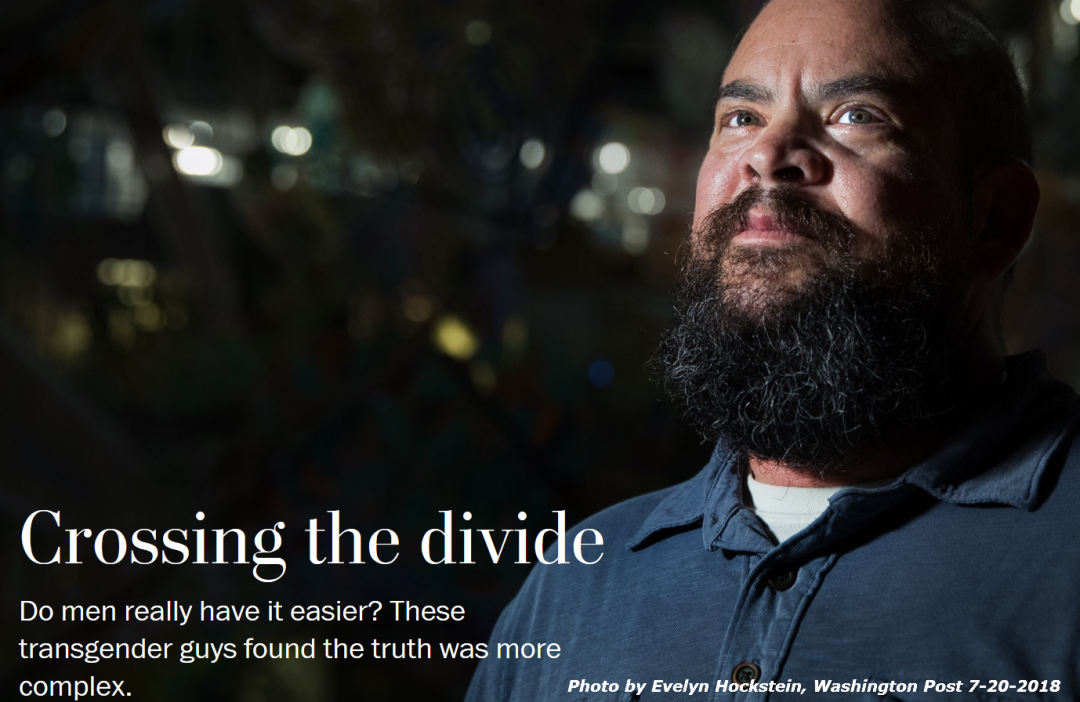
We want to direct our readers attention to a wonderful article in the July 20th Washington Post that covers the stories of four trans-men after they transitioned.
“Clinics have reported an increase in people seeking medical gender transitions in recent years, and research suggests the number of people identifying as transgender has risen in the past decade. Touchstones such as Caitlyn Jenner’s transition, the bathroom controversy, and the Amazon series “Transparent” have also made the topic a bigger part of the political and cultural conversation.
But it is not always evident when someone has undergone a transition — especially if they have gone from female to male.
“The transgender guys have a relatively straightforward process — we just simply add testosterone and watch their bodies shift,” said Joshua Safer, executive director at the Center for Transgender Medicine and Surgery at Mount Sinai Health System and Icahn School of Medicine in New York. “Within six months to a year they start to virilize — getting facial hair, a ruddier complexion, a change in body odor and a deepening of the voice.”
Transgender women have more difficulty “passing”; they tend to be bigger-boned and more masculine-looking, and these things are hard to reverse with hormone treatments, Safer said. “But the transgender men will go get jobs and the new boss doesn’t even know they’re trans.”
We spoke with four men who transitioned as adults to the bodies in which they feel more comfortable. Their experiences reveal that the gulf between how society treats women and men is in many ways as wide now as it was when Barres transitioned. But their diverse backgrounds provide further insight into how race and ethnicity inform the gender divide in subtle and sometimes surprising ways.” Read the full story in the Washington Post, “Crossing the Divide” at this link: Crossing the Divide in the 7-20-2018 Washington Post.
